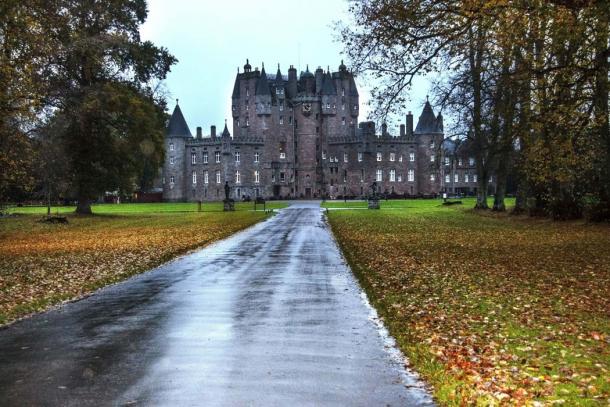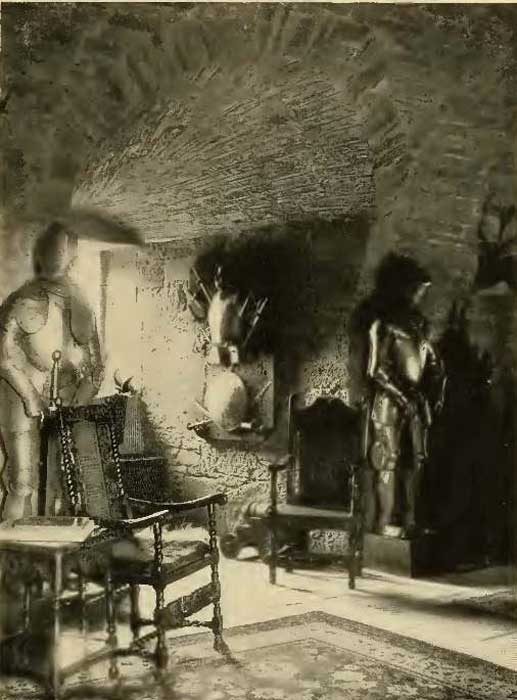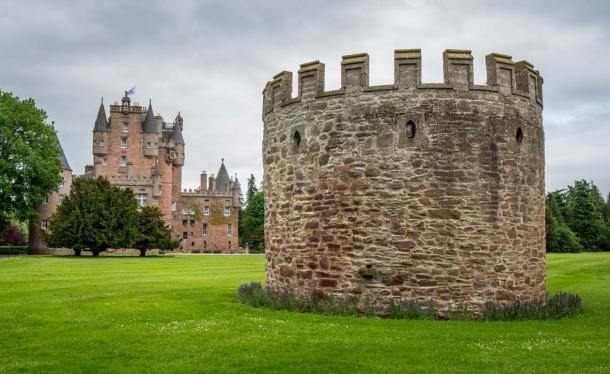
The Dark Secret Behind the Hidden Room of Glamis Castle
If you could even guess the nature of this castle’s secret, said Claude Bowes-Lyon, 13th Earl of Strathmore, you would get down on your knees and thank God it was not yours.
Glamis Castle, one of the most haunted castles in Great Britain, was the talk of ancient Europe during the second half of the 19th century. The castle was connected with tales involving secret passages, hidden prisoners, initiation rites, and shadowy figures seen on the ramparts late at night.

Glamis Castle near Forfar - Angus,Scotland, United Kingdom. (iweta0077 /Adobe Stock)
The secret was apparently so extraordinary that only three people were ever allowed to know it at one time: The Earl, the Earl’s heir (after he reached his 21st birthday), and the estate manager, known as a factor. Stories abounded over just what the Earls’ secret could be. According to legend, the heir of the 13th Earl of Strathmore flatly refused to participate in the initiation rite that would have informed him of the castle’s dark history. Many suspect that the mystery died with the 14th Earl; however, visitors cannot deny the chilling atmosphere felt in the Castle, especially in the lonely hours past midnight.
“I must own,” wrote Sir Walter Scott of his 1790 overnight visit to the castle, “as I heard door after door shut, after my conductor had retired, I began to consider myself as too far from the living and somewhat too near to the dead.”
Glamis Castle and it’s Connections to the Earl of Strathmore and Macbeth
Glamis Castle was not just any principality. It was the seat of the Earl of Strathmore, a title still currently held by the Bowes-Lyon family – the maternal kinfolk of Queen Elizabeth II. The Queen Mother, Lady Elizabeth Bowes-Lyon, was the daughter of the 14th Earl of Strathmore.
Tragedy has always lingered in Glamis, even before the Victorian Era secret emerged. Famously, King Malcolm II was murdered at the Castle (then a Royal Hunting Lodge) in 1034. In Shakespeare’s Macbeth (written in 1606), the ill-fated protagonist lives in Glamis Castle, although the historical King Macbeth had no connection with the site.
- A Peek into The Paranormal Activity at Haunted Castles in Romania
- The Dramatic and Bloody History of Nottingham Castle
- Donegal Castle: Home of the O’Donnell Clan, Fort of the Foreigner, Captivating Gaelic Castle
The castle came into the possession of the Lyon family (later the Bowes-Lyons) in 1376. The first ghost that was said to haunt the castle corridors was that of Lady Janet Douglas. Caught up in regional politics, Lady Janet was accused of poisoning her husband (the 6th Lord of Glamis) and ultimately was convicted of witchcraft in 1537. She was burned at the stake in Edinburgh. The spirit of Lady Janet is said to favor the castle’s clock tower.

Lady Janet Douglas. (ghostinuk.blogspot.com)
Glamis Castle’s Legendary Secret Chamber and its ‘Monster’
Yet the most famous legend of Glamis Castle is that of an unknown prisoner held in a secret hidden chamber. According to a correspondent to the journal Notes & Queries, writing in 1908,
“The mystery was told to the present writer some 60 years ago, when he was a boy, and it made a great impression on him. The story was, and is, that in the Castle of Glamis is a secret chamber. In this chamber is confined a monster, who is the rightful heir to the title and property, but who is so unpresentable that it is necessary to keep him out of sight and out of possession” (Dash, 2012).
The Monster of Glamis has been described as deformed, hairy, ‘a human toad,’ and always terrifying to behold. “A monster was born into the family. He was the heir—a creature fearful to behold. It was impossible to allow this deformed caricature of humanity to be seen—even by their friends.… His chest an enormous barrel, hairy as a doormat, his head ran straight into his shoulders and his arms and legs were toy like” (Dash, 2012).

Glamis Castle. (Lato-Pictures /Adobe Stock)
Sightings of the Eerie Figure at Glamis Castle
Some witnesses claim to have seen the strange creature’s shadow as he prowled the battlements late at night. One story tells how a castle workman unexpectedly found a door that led to a long, unfamiliar passageway. Walking along in eerie silence, the man is said to have seen ‘something’ at the far end of the passage. He fled and immediately reported his encounter to the factor. He was promptly encouraged by both the Earl and the factor “to emigrate to Australia, his passage paid by an anxious Earl” (Dash, 2012).
- Radzyn Chelminski: The Captivating History of a Castle of the Teutonic Order
- Malbork Castle: Searching for Treasure and Legends in the Shadows of the Teutonic Order
- Predjama Castle: The Castle in a Cave that Housed a Slovenian Robin Hood

A corner of the Crypt at Glamis Castle. (electricscotland.com)
If there is any agreed theory as to the origins of the ‘Monster’, it is that he was the first-born son of the 11th Earl Thomas Bowes-Lyon and his wife Charlotte Bowes-Lyon. According to contemporary records, the first child was “a son, born and died 21 October 1821.”
But what if he did not die? What if the unfortunate baby was born with deformities that were so severe his parents faked his death and hid him away? The real facts may never be known, but what is sure is that something very dark occurred in the old castle of Glamis.

Glamis Castle, Angus, Scotland. (ejesposito /Adobe Stock)
Top Image: Glamis Castle. Source: Lato-Pictures /Adobe Stock
References:
Dash, Mike. "The Monster of Glamis." Smithsonian Magazine. Smithsonian, 10 Feb. 2010. Web. 11 Oct. 2016. http://www.smithsonianmag.com/history/the-monster-of-glamis-92015626/?no-ist
Parkinson, Daniel. "Glamis Castle." Glamis Castle. Mysterious Britain & Ireland, 2012. Web. 11 Oct. 2016. http://www.mysteriousbritain.co.uk/scotland/angus/hauntings/glamis-castle.html
The Queen's Hidden Cousins. The Queen's Hidden Cousins. Channel 4, 2011. Web. http://www.channel4.com/programmes/the-queens-hidden-cousins
















Comments
Probably the most famous case of royal insanity was Juana (also Johnna) of Castile, the sister of Katherine of Aragon, the first wife of Henry the VIII. Although Juana had a few episodes of insanity growing up, she totally lost it when her husband, Philip the handsome, died. She kept his coffin with her for years until she was finally imprisoned in Tordesillas castle until her death. Supposedly, she also had an aunt that was confined to her room because of insanity, though I can’t recall her name off the top of my head.
https://www.youtube.com/watch?v=1rU-OjKK2_A&ab_channel=%28UK%29Myste...
I think you are thinking of Katherine and Nerissa Bowes-Lyon, who were the Queen Mothers’ nieces from her brother. They were kept locked up at Royal Earlswood Hospital in Redhill, Surrey. Then of course, there was Prince John, a son of Queen Mary and King George V. He was kept at Sandrington House until his death. I have also read somewhere that there has long been a great fear of Mad King George III passing his illness down to family. Harry really has a lot of oppressive family history to work through.
Jamie R
I have read the issue of inbreeding but have yet to see an example of it. At least not in the true lines.
Sir Clerke
It happened more than known in that time frame...The royals were not known for expanding their gene pool....
Pages